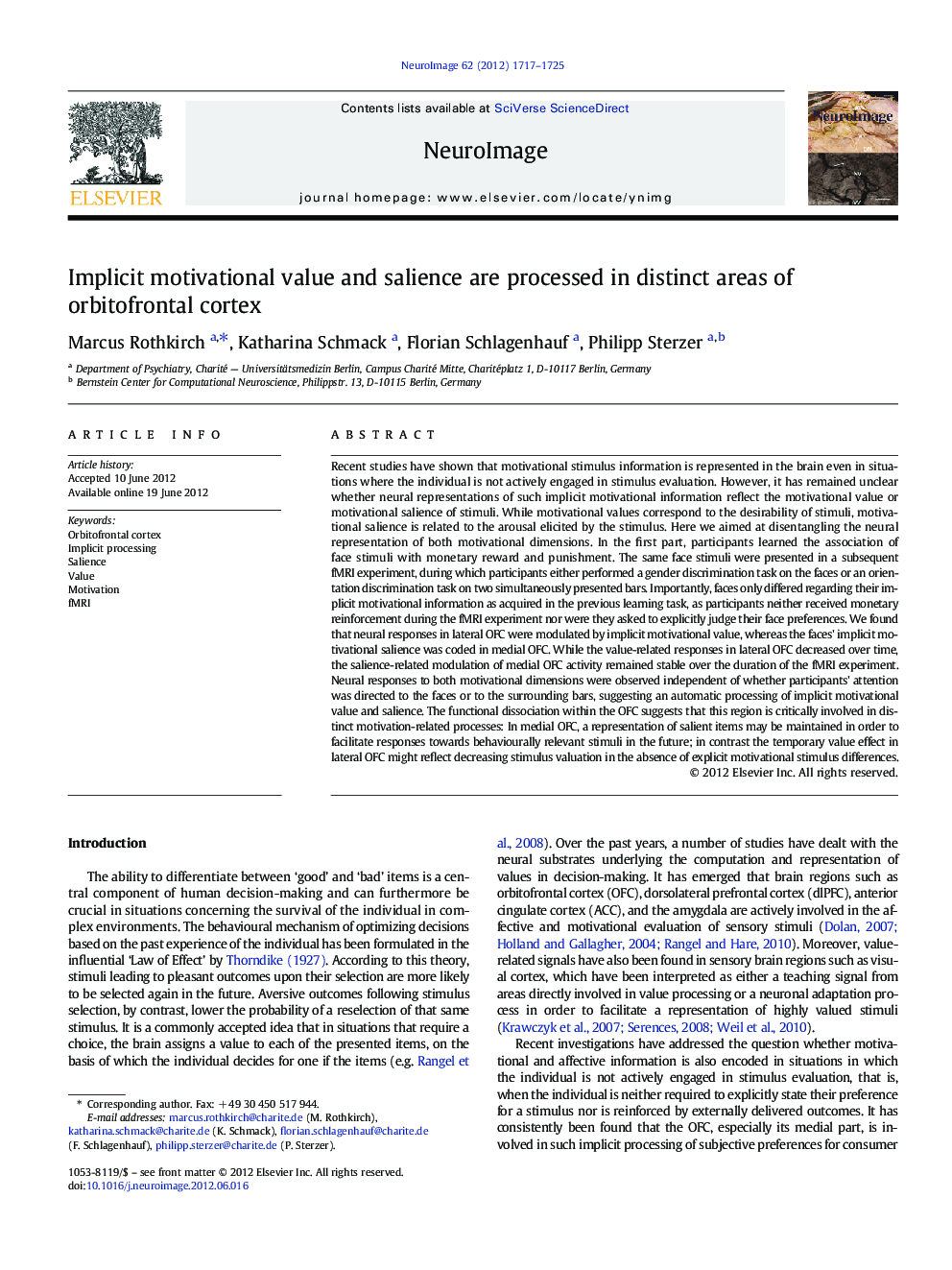| Article ID | Journal | Published Year | Pages | File Type |
|---|---|---|---|---|
| 6030387 | NeuroImage | 2012 | 9 Pages |
Abstract
Recent studies have shown that motivational stimulus information is represented in the brain even in situations where the individual is not actively engaged in stimulus evaluation. However, it has remained unclear whether neural representations of such implicit motivational information reflect the motivational value or motivational salience of stimuli. While motivational values correspond to the desirability of stimuli, motivational salience is related to the arousal elicited by the stimulus. Here we aimed at disentangling the neural representation of both motivational dimensions. In the first part, participants learned the association of face stimuli with monetary reward and punishment. The same face stimuli were presented in a subsequent fMRI experiment, during which participants either performed a gender discrimination task on the faces or an orientation discrimination task on two simultaneously presented bars. Importantly, faces only differed regarding their implicit motivational information as acquired in the previous learning task, as participants neither received monetary reinforcement during the fMRI experiment nor were they asked to explicitly judge their face preferences. We found that neural responses in lateral OFC were modulated by implicit motivational value, whereas the faces' implicit motivational salience was coded in medial OFC. While the value-related responses in lateral OFC decreased over time, the salience-related modulation of medial OFC activity remained stable over the duration of the fMRI experiment. Neural responses to both motivational dimensions were observed independent of whether participants' attention was directed to the faces or to the surrounding bars, suggesting an automatic processing of implicit motivational value and salience. The functional dissociation within the OFC suggests that this region is critically involved in distinct motivation-related processes: In medial OFC, a representation of salient items may be maintained in order to facilitate responses towards behaviourally relevant stimuli in the future; in contrast the temporary value effect in lateral OFC might reflect decreasing stimulus valuation in the absence of explicit motivational stimulus differences.
Related Topics
Life Sciences
Neuroscience
Cognitive Neuroscience
Authors
Marcus Rothkirch, Katharina Schmack, Florian Schlagenhauf, Philipp Sterzer,
